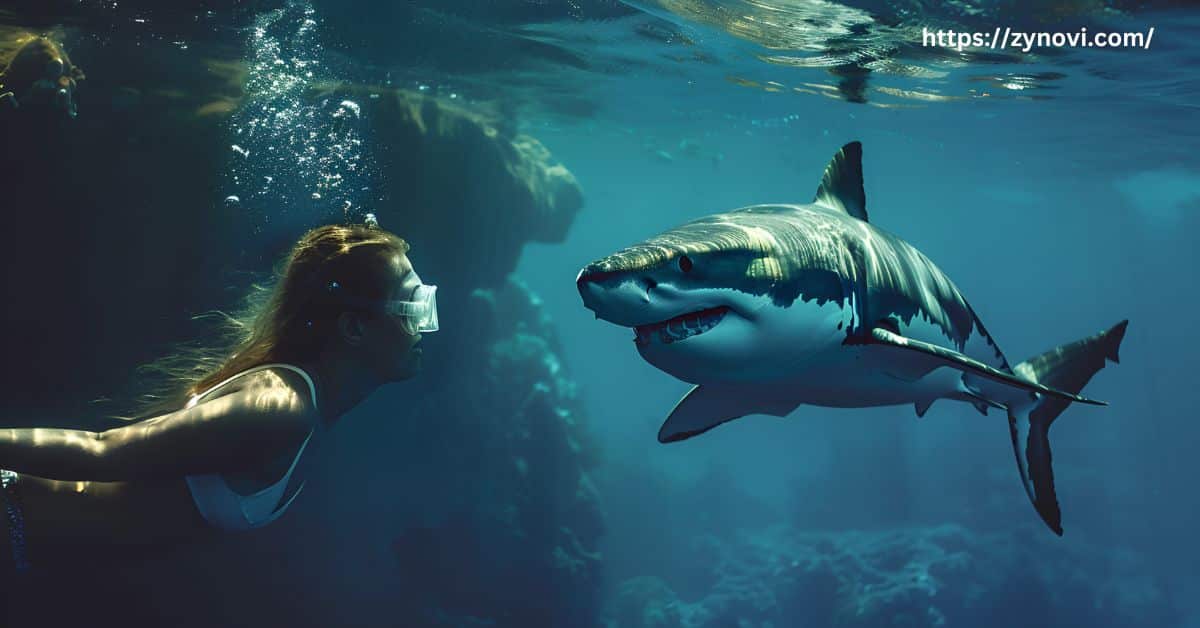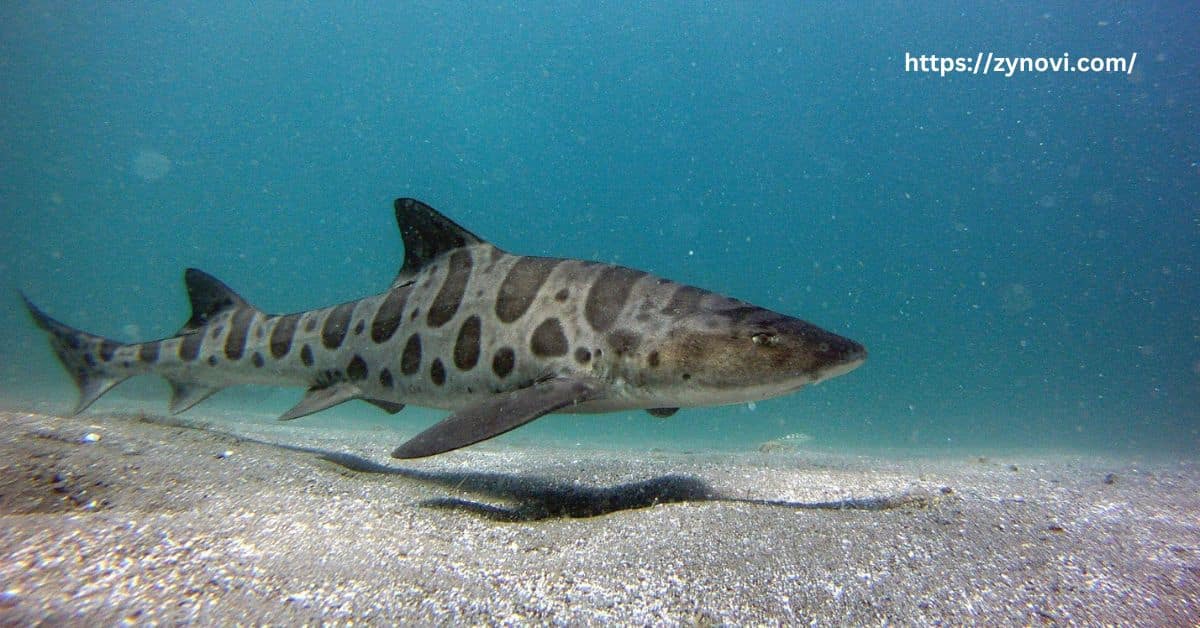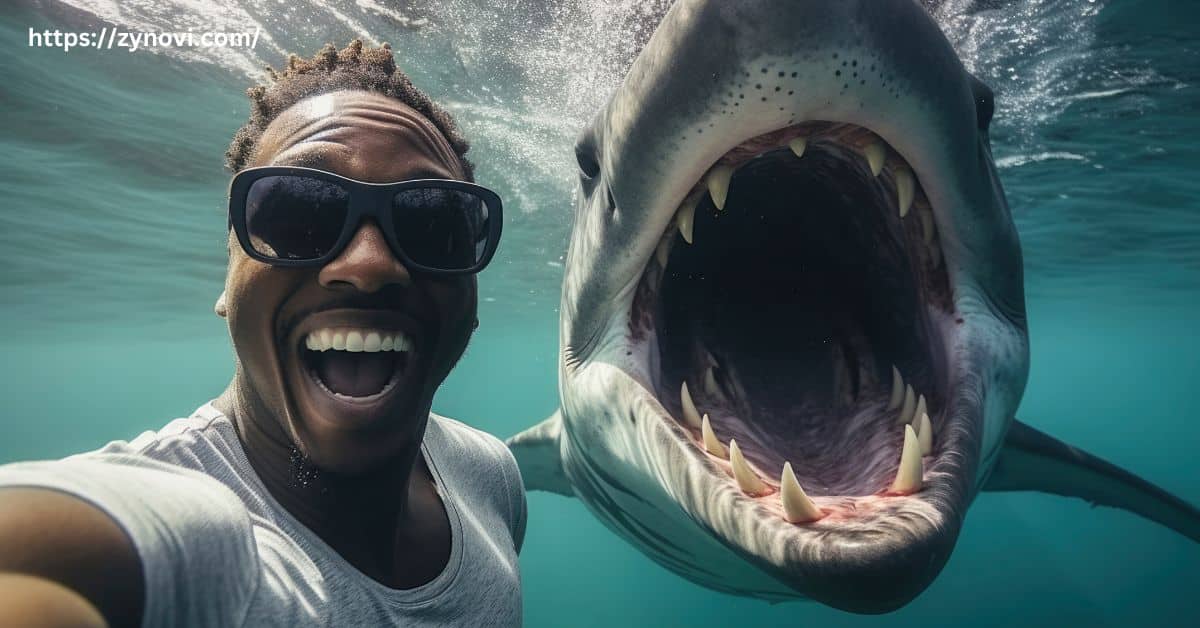Do leopard sharks attack humans? Leopard sharks pose no threat to humans, as they are gentle and non-aggressive by nature.
It’s a question that sparks curiosity among those who enjoy exploring the wonders of the ocean. These fascinating creatures, with their striking spotted bodies and peaceful nature, have long been a favorite of divers and snorkelers. But while they’re known for their calm demeanor, you may still wonder: Is it safe to swim near them?
In this article, we’ll find the truth behind leopard shark behavior and uncover whether these sharks pose any real threat to humans. By the end, you’ll have all the answers you need to confidently enjoy your next ocean adventure!
What is a Leopard Shark?
The leopard shark (Triakis semifasciata) is a fascinating member of the houndshark family, thriving in the shallow coastal waters of the eastern Pacific Ocean.
Recognizable by their saddle-shaped patterns and distinctive black or dark gray spots, these sleek sharks are not just visually striking but are also an integral part of their marine ecosystem, showcasing their adaptability and unique traits.
Physical Description
| Attribute | Details |
|---|---|
| Length | Typically ranges from 4-5 feet but can grow as large as 6.5 feet. |
| Weight | Adult leopard sharks usually weigh between 40-50 pounds. |
| Head Shape | Features a flattened head for better maneuverability in shallow waters. |
| Body Shape | Elongated and slim, designed for efficient swimming. |
| Distinct Markings | Characterized by dark gray or black saddle-shaped spots on a silvery body. |
These attributes make the leopard shark uniquely adapted to its environment, blending both functionality and beauty.
Habitat and Distribution
- Pacific Coast Range: Leopard sharks are predominantly found along the Pacific coast, with their range extending from California to Oregon. Their presence is especially prominent in areas rich with marine biodiversity.
- Shallow Coastal Waters: These sharks prefer shallow waters where sunlight penetrates easily. Bays, estuaries, and kelp forests are their favorite habitats due to abundant food sources and protective environments.
- Seasonal Movement: During the warmer months, leopard sharks are commonly seen in regions with sandy or muddy bottoms. These areas provide ideal conditions for feeding and breeding activities.
Diet and Behavior
Leopard sharks are bottom feeders, using suction feeding to consume:
- Crabs: Leopard sharks frequently feed on crabs found in the sandy and muddy bottoms of their habitats, using their powerful suction feeding technique to capture them.
- Shrimp: Shrimp form a significant portion of their diet, offering an abundant and easily accessible food source in shallow waters.
- Mollusks: These sharks consume various mollusks, including clams and snails, which are plentiful in their coastal habitats.
- Small Fish: Leopard sharks are known to prey on small fish, which they hunt using their keen sense of smell and precise movements.
- Worms: Worms found in the substrate of their habitats also form an essential part of their diet, showcasing their adaptability as bottom feeders.
Their feeding habits contribute significantly to maintaining the ecological balance of their marine environments by controlling prey populations and recycling nutrients.
Do Leopard Sharks Attack Humans?

Leopard sharks are widely known for their non-aggressive behavior. Let’s break down why they’re considered one of the safest sharks to encounter.
Natural Aggression Level
Leopard sharks are naturally gentle and non-aggressive creatures, making them one of the safest shark species to encounter. Unlike predatory sharks such as great whites, they lack the instincts to view larger animals, including humans, as prey.
Their diet is limited to small, bottom-dwelling creatures like crabs, shrimp, and mollusks. This focus ensures that humans remain entirely irrelevant to their feeding preferences.
Recorded Incidents
- There are no documented cases of unprovoked leopard shark attacks on humans.
- Rare incidents are usually due to mistaken identity, such as when a swimmer accidentally steps on or provokes them.
- Any injuries reported are minor, such as superficial scratches or nips.
Causes of Low Aggression
- Non-territorial: Leopard sharks are not defensive of their habitat, making them less prone to aggressive behaviors toward intruders.
- Calm demeanor: Known for their tranquil nature, leopard sharks often coexist peacefully with swimmers, divers, and other marine creatures.
- Limited bite strength: Their small, blunt teeth are adapted for gripping soft prey like worms and mollusks, not for biting larger animals or causing harm.
Why Leopard Sharks Are Harmless to Humans

Leopard sharks have earned their reputation as harmless due to their predictable and calm interactions with humans. Here are key reasons:
Gentle Swimmers: Leopard sharks are known for their calm and graceful swimming patterns, typically gliding through shallow coastal waters with minimal disturbance to their surroundings. They move at a slow, deliberate pace, creating little to no threat to humans or marine life.
Non-aggressive Feeding: These sharks feed primarily on small fish, invertebrates, and other organisms found on the seafloor. They have a non-aggressive feeding style, using their bottom-dwelling habits to avoid encounters with larger animals or humans, making them unlikely to pose any harm.
Human Interaction: Leopard sharks are naturally curious and often tolerate human presence in their environment. They have been observed swimming near snorkelers and divers without displaying aggression, allowing for close observation without feeling threatened, which further emphasizes their peaceful nature.
Example: In La Jolla Cove, California, leopard sharks congregate annually during summer, attracting snorkelers eager to witness their graceful movements up close.
Myths and Misconceptions About Leopard Sharks
Do leopard sharks attack humans? Some Common Myths about that
- Myth: Leopard sharks are dangerous because they’re sharks.
- Reality: They are one of the most docile species.
- Myth: They’ll attack swimmers if provoked.
- Reality: They’ll usually swim away to avoid confrontation.
Addressing Misconceptions
- Unlike their larger cousins, leopard sharks lack the physical build or behavioral drive to pose a threat to humans.
- Media often exaggerates shark encounters, grouping all species together, which contributes to unnecessary fear.
Precautions for Swimming Near Leopard Sharks
While leopard sharks are harmless, following basic safety advice ensures enjoyable encounters.
Respectful Distance: Always maintain a respectful distance from leopard sharks to avoid startling or cornering them. This allows the sharks to swim freely and ensures both your safety and theirs.
Stay Calm: If a leopard shark approaches you, stay still and avoid sudden movements. Quick actions may startle the shark or cause unnecessary stress, potentially altering its behavior.
No Feeding or Touching: Never attempt to feed or touch a leopard shark. Feeding can disrupt their natural foraging habits, and physical contact can lead to stress or injury for both the shark and you.
Swim in Groups: Swimming with others not only enhances the experience but also provides a sense of security. Sharks, including leopard sharks, tend to be more comfortable when they don’t feel isolated or threatened.
Pro Tip: Early mornings and late afternoons are the best times to spot leopard sharks when they’re most active.
Impact on Marine Tourism and Conservation
Leopard sharks play a significant role in marine tourism and are increasingly recognized as an asset for eco-tourism.
Marine Tourism
- Snorkeling Hotspots: Locations like La Jolla Cove attract thousands of visitors annually to observe these beautiful creatures.
- Shark Photography: Their calm demeanor makes them perfect subjects for underwater photography.
Conservation Efforts
- Not Endangered: Leopard sharks are classified as Near Threatened due to localized pressures but are not endangered.
- Protection Measures: Regulations against overfishing and habitat destruction are critical for their survival.
- Educational Programs: Efforts to teach the public about their role in ecosystems help reduce unnecessary fears.
Final Verdict
The answer is a resounding no. Leopard sharks are non-dangerous, displaying gentle and peaceful behavior toward humans. Their diet, habitat, and interactions prove they are a species to be admired rather than feared.
- Fact: Swimmers and snorkelers frequently encounter leopard sharks without any incidents.
- Fact: They’re more likely to avoid humans than engage with them aggressively.
FAQs
Are leopard sharks aggressive?
No, leopard sharks are very docile and pose virtually no threat to humans.
Can you swim with leopard sharks?
Yes, leopard sharks are generally safe and often allow close encounters with divers and swimmers.
Which shark attacks humans the most?
Great white sharks are responsible for the highest number of unprovoked human attacks.
Is leopard shark friendly?
Yes, leopard sharks are considered extremely non-aggressive and typically shy around humans.
Conclusion: Do leopard sharks attack humans?
Leopard sharks are considered one of the safest and most peaceful shark species to encounter, making them a beloved choice for marine life enthusiasts and divers alike. Known for their calm demeanor and striking spotted appearance, these sharks play an important role in maintaining the health of marine ecosystems.
As long as you respect their space and follow basic safety guidelines, your encounters with leopard sharks can be both safe and unforgettable. By appreciating their natural behavior, we can ensure their continued presence in our oceans for generations to come.
“Leopard sharks remind us that not all sharks deserve their fierce reputation. They’re gentle ambassadors of the sea.”










